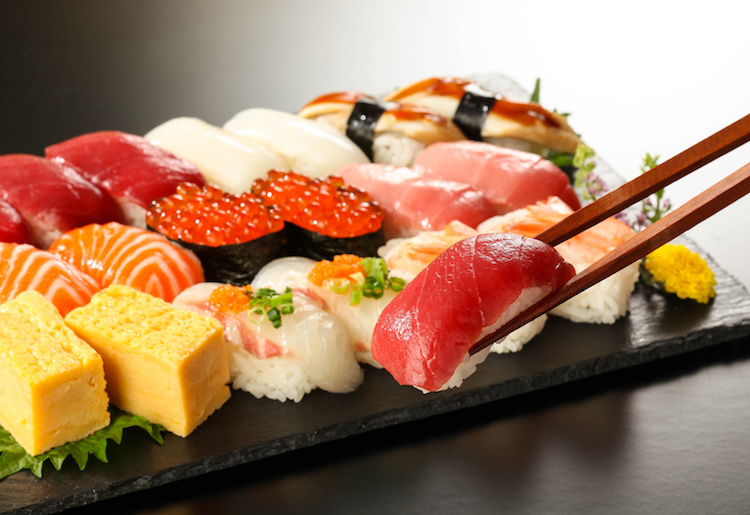Sushi, a dish cherished by millions worldwide, holds a captivating history that mirrors the evolution of Japanese cuisine. Its journey from a humble method of preserving fish to a revered culinary art form is as fascinating as it is mouthwatering.

Origins in Preservation:
Sushi’s story begins centuries ago in Southeast Asia, where people discovered that fermenting fish with rice extended its shelf life. This early form of sushi, known as narezushi, involved packing fish and rice tightly in a container and allowing it to ferment for months. The rice acted as a natural preservative, transforming the fish into a tangy delicacy.
Development in Japan:
As sushi migrated to Japan, it underwent significant transformations, particularly during the Edo period (17th-19th centuries). In bustling Edo (now Tokyo), street vendors began selling edo-mae zushi, featuring fresh fish caught from nearby Tokyo Bay. This style of sushi emphasized simplicity, with fish sliced and served atop seasoned rice, reflecting a commitment to freshness and minimalism.
Introduction of Nori:
The addition of nori, or dried seaweed, further revolutionized sushi-making. Initially used to wrap around sushi to keep it intact, nori eventually became a staple ingredient, especially in maki rolls. Its inclusion not only enhanced the flavor and texture but also facilitated the consumption of sushi by hand, contributing to its popularity.
Modernization and Globalization:
In the 20th century, sushi underwent a rapid modernization fueled by advancements in transportation and technology. Refrigeration and faster transit enabled fresh fish to be transported globally, expanding sushi’s reach beyond Japan’s borders. Innovations such as conveyor belt sushi (kaiten-zushi) made sushi more accessible and affordable, contributing to its widespread popularity.

Diverse Varieties:
Today, sushi has evolved into a diverse culinary landscape, with countless variations to suit every palate. Traditional nigiri and sashimi remain beloved classics, while creative fusion rolls offer innovative flavor combinations. Sushi chefs around the world continue to experiment with ingredients and techniques, pushing the boundaries of creativity while honoring the fundamental principles of balance and quality.
Conclusion:
From its humble origins as a method of preserving fish to its status as a global culinary phenomenon, sushi’s journey is a testament to the enduring appeal of Japanese cuisine. Rooted in tradition yet open to innovation, sushi continues to captivate diners worldwide with its exquisite flavors, meticulous craftsmanship, and timeless charm.








